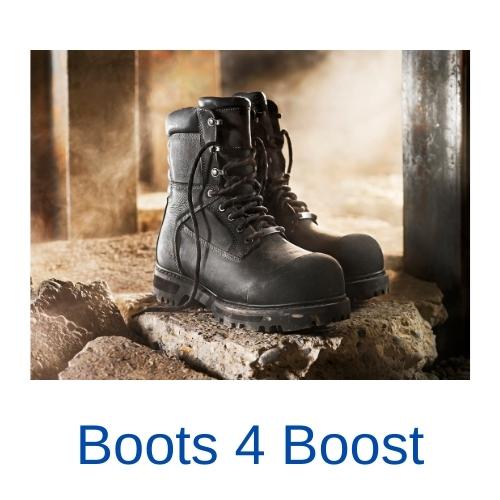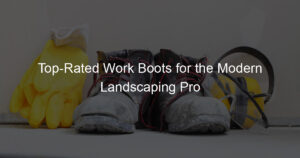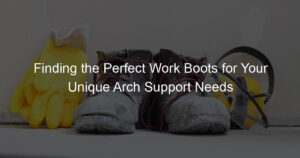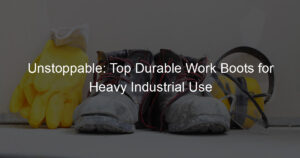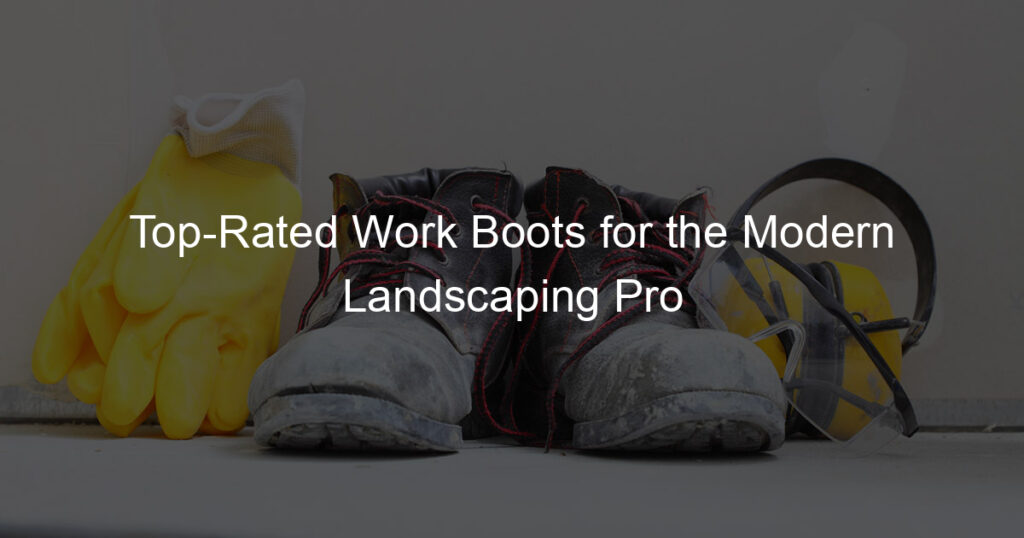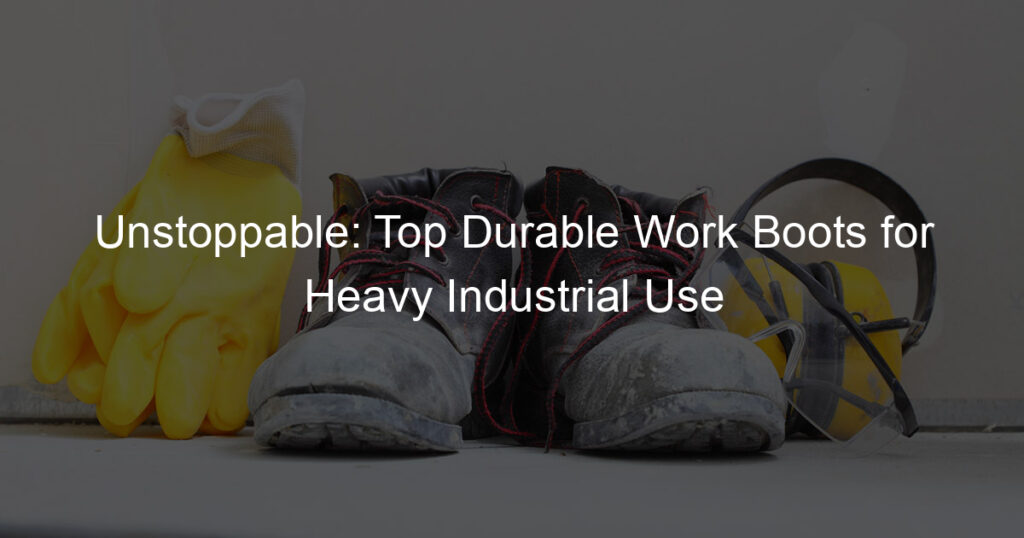
Introduction: The Importance of Work Boots for Achilles Tendon
When it comes to protecting our bodies at work, we often think about helmets, gloves, and safety glasses. But what about our feet? Specifically, what about the Achilles tendon, one of the most crucial parts of our foot? This is where the importance of work boots comes into play. Let’s delve into this topic and understand why work boots are essential for Achilles tendon protection.
- The Role of Footwear in Preventing Achilles Tendon Injuries
- Understanding the Anatomy of the Achilles Tendon
Footwear plays a significant role in preventing injuries, especially to the Achilles tendon. This tendon, located at the back of your ankle, is susceptible to strain and injury. Wearing the right work boots can provide the necessary support and cushioning, reducing the risk of injury. For instance, work boots with a sturdy heel can help distribute pressure evenly across your foot, reducing strain on the Achilles tendon. In fact, according to the American Academy of Orthopaedic Surgeons, wearing appropriate footwear is one of the key preventive measures against foot and ankle injuries.
The Achilles tendon is the largest tendon in the body, connecting the calf muscles to the heel bone. It’s responsible for the push-off motion during walking or running. Because of its function and location, it’s prone to injury, especially in environments where heavy lifting or prolonged standing is required. Understanding the anatomy of the Achilles tendon can help us appreciate the importance of wearing the right work boots. These boots are designed to support the foot, reducing pressure on the Achilles tendon and preventing potential injuries.
In the following sections, we will delve deeper into the causes and prevention of Achilles tendon injuries, the role of work boots in protecting this crucial tendon, and the key features to look for when choosing work boots for Achilles tendon support. We will also explore other health benefits of work boots and share some of the best practices for preventing foot injuries at work. Stay tuned!
Achilles Tendon Injuries: Causes and Prevention
Understanding the causes of Achilles tendon injuries is the first step towards prevention. Let’s delve into the common causes and how we can prevent them.
Common Causes of Achilles Tendon Injuries
There are several factors that can lead to Achilles tendon injuries. However, two of the most common causes are:
- Overuse and strain: This is the most common cause of Achilles tendon injuries. When the tendon is overused, it can lead to inflammation, also known as tendonitis. This often occurs in people who suddenly increase the intensity or duration of their workouts without giving the body enough time to adjust.
- Improper footwear: Wearing shoes that do not provide adequate support can also lead to Achilles tendon injuries. This is particularly common in individuals who wear high heels or shoes with inadequate arch support. The strain on the tendon increases, leading to injury.
Now that we know the common causes, we can take steps to prevent these injuries. This includes regular stretching and exercise, as well as wearing proper footwear. By understanding the causes and taking preventative measures, we can reduce the risk of Achilles tendon injuries.
Preventing Achilles Tendon Injuries at Work
Preventing Achilles tendon injuries at work is not only possible but also essential for maintaining your overall health and productivity. There are two key strategies that can significantly reduce the risk of these injuries: regular stretching and exercise, and wearing proper footwear.
- Regular Stretching and Exercise
Regular stretching and exercise can help strengthen your Achilles tendon, making it less prone to injury. A strong tendon can withstand more strain, reducing the risk of injuries. It’s important to incorporate a mix of both stretching and strengthening exercises into your routine.
For example, calf raises can be particularly beneficial for strengthening the Achilles tendon. To do a calf raise, stand straight and then slowly raise your heels off the ground, standing on your toes. Hold this position for a few seconds before slowly lowering your heels back to the ground. Repeat this exercise 10 to 15 times, twice a day.
Stretching exercises, like the standing calf stretch, can also help. To do this stretch, stand facing a wall with your hands at eye level. Place one foot behind the other, keeping the back heel on the ground, and lean forward until you feel a stretch in your calf. Hold this position for 15 to 30 seconds and then switch legs. Repeat this stretch three times for each leg.
- Proper Footwear
The second key strategy for preventing Achilles tendon injuries at work is wearing proper footwear. The right shoes can provide the support and cushioning your feet need, reducing strain on your Achilles tendon.
When choosing work boots, look for features like a supportive arch, cushioned insole, and a heel that’s not too high or too low. These features can help distribute weight evenly across your foot, reducing pressure on your Achilles tendon.
Remember, it’s not just about the type of shoes you wear, but also about the fit. Shoes that are too tight can squeeze your foot and increase pressure on your Achilles tendon, while shoes that are too loose can cause your foot to slide and create additional strain. Therefore, it’s crucial to find shoes that fit well and provide the right amount of support.
In conclusion, by incorporating regular stretching and exercise into your routine and wearing proper footwear, you can significantly reduce the risk of Achilles tendon injuries at work. Remember, prevention is always better than cure, especially when it comes to your health.
Safety Footwear for Achilles Tendon: The Role of Work Boots
When it comes to protecting your Achilles tendon, the type of footwear you choose can make a significant difference. This is particularly true in the workplace, where the right pair of work boots can provide the necessary support and protection for your feet and ankles. Let’s delve into how work boots fulfill this role.
- How work boots provide support and protection
Work boots are specifically designed to offer maximum protection and support for your feet. They are typically made with sturdy materials like leather and rubber, which can withstand the rigors of a demanding work environment. The thick soles of work boots provide a cushioning effect, reducing the impact on your feet and ankles when you walk or stand for long periods.
Moreover, many work boots come with reinforced toe caps and ankle support, which can help prevent injuries to your Achilles tendon. The high-top design of work boots also provides additional support to your ankles, reducing the risk of sprains and strains.
- Work boots vs. regular shoes: A comparison
Compared to regular shoes, work boots offer a higher level of protection and support for your feet and ankles. Regular shoes may be more comfortable and lightweight, but they lack the robust construction and safety features of work boots.
For instance, work boots often come with slip-resistant soles, which can prevent falls on slippery surfaces. They also have a wider and deeper toe box, allowing more room for your toes to move freely. This can reduce the risk of developing conditions like bunions and hammertoes, which can exacerbate Achilles tendon issues.
On the other hand, regular shoes are typically designed for comfort and style rather than safety. They may not provide adequate support for your feet and ankles, especially if you’re standing or walking for long periods. This lack of support can put extra strain on your Achilles tendon, increasing the risk of injury.
In conclusion, while both work boots and regular shoes have their pros and cons, work boots are the better choice when it comes to protecting your Achilles tendon in the workplace.
Protective Work Boots: Key Features for Achilles Tendon Support
When it comes to protecting your Achilles tendon, the right work boots can make a significant difference. In this section, we will be focusing on two key features of protective work boots: heel support and cushioning.
Heel Support and Cushioning
Heel support and cushioning are two of the most important features in work boots when it comes to supporting the Achilles tendon. Let’s take a closer look at why these features are so crucial.
- Importance of Heel Support
- How Cushioning Helps Reduce Impact
Heel support is crucial in work boots because it helps to stabilize the foot and reduce strain on the Achilles tendon. When you’re on your feet all day, especially on hard surfaces, the Achilles tendon can become overstressed. This can lead to pain and even injury. A work boot with good heel support can help to distribute the weight evenly across your foot, reducing the pressure on your Achilles tendon.
Cushioning in work boots plays a vital role in reducing the impact on your feet when walking or standing. Each step you take generates a force up to three times your body weight. Without proper cushioning, this force is absorbed by your feet and can cause damage to the Achilles tendon over time. Cushioning helps to absorb this shock, reducing the impact on your Achilles tendon and helping to prevent injuries.
In conclusion, heel support and cushioning are key features in protective work boots that help to support the Achilles tendon. By reducing strain and impact, these features can help to keep your feet healthy and prevent injuries.
Ankle Support and Stability
When it comes to protective work boots, one of the key features that play a significant role in preventing injuries and protecting the Achilles tendon is ankle support and stability. Let’s delve into these aspects in more detail.
- The Role of Ankle Support in Preventing Injuries
- How Stability Features Protect the Achilles Tendon
Ankle support is a crucial feature of work boots designed to protect your feet. The ankle is a complex joint that, when unsupported, can be prone to sprains and strains. A study by the National Safety Council revealed that approximately 25,000 people each day suffer from an ankle sprain in the United States. This highlights the importance of ankle support in work boots.
Work boots with proper ankle support help to keep the foot stable and aligned, reducing the risk of injury. They provide a snug fit around the ankle, preventing it from rolling inwards or outwards. This support can be particularly beneficial when walking on uneven surfaces or carrying heavy loads, common scenarios in many workplaces.
The Achilles tendon, the largest tendon in the body, connects the calf muscles to the heel bone. It plays a vital role in walking, running, and jumping. However, it is also vulnerable to injuries due to overuse or sudden intense strain.
Stability features in work boots, such as a well-structured heel cup and a firm midsole, can help protect the Achilles tendon. These features ensure that the foot moves correctly, reducing strain on the tendon. They also help to absorb shock, lessening the impact on the Achilles tendon when the foot hits the ground.
Furthermore, boots with good stability can prevent overpronation or oversupination – excessive inward or outward rolling of the foot. Both these conditions can put extra stress on the Achilles tendon, leading to injuries over time.
Work Boots Health Benefits: Beyond Achilles Tendon Protection
Work boots are not just about protecting your Achilles tendon. They offer a range of other health benefits too. Let’s explore some of these benefits.
- Improved Posture
One of the significant health benefits of wearing work boots is improved posture. Work boots are designed to provide the right support to your feet, which helps maintain a proper body alignment. This support can help reduce the strain on your back, hips, and knees. Wearing work boots can help you stand straighter and walk more comfortably, even when you’re working long hours.
Consider this example: A study conducted on construction workers found that those who wore work boots reported less back pain compared to those who didn’t. This shows how work boots can contribute to better posture and overall health.
- Reduced Risk of Other Foot Injuries
Work boots can also help reduce the risk of other foot injuries. They are built to provide protection against sharp objects, heavy falling objects, and even electrical hazards. The sturdy material of work boots can prevent cuts, punctures, and other injuries that can occur in a hazardous work environment.
For instance, a survey conducted among factory workers revealed that foot injuries were significantly lower among those who consistently wore safety footwear, like work boots, compared to those who didn’t. This highlights the importance of wearing work boots, not just for Achilles tendon protection, but for overall foot safety.
In conclusion, work boots offer numerous health benefits beyond Achilles tendon protection. They contribute to improved posture and reduced risk of other foot injuries, making them an essential part of your work gear.
Preventing Foot Injuries at Work: Best Practices
Preventing foot injuries at work is crucial for maintaining productivity and ensuring the well-being of employees. Here are some best practices that can help prevent foot injuries, particularly those related to the Achilles tendon.
- Regular Breaks and Stretching
- Proper Lifting Techniques
- Wearing the Right Work Boots
Taking regular breaks is not just good for your mind, it’s also beneficial for your feet. Sitting down for a few minutes can help relieve the pressure on your feet. Additionally, stretching exercises can help prevent injuries by improving flexibility and strengthening the muscles around the Achilles tendon. For instance, calf stretches and toe raises are simple exercises that can be done even at your workstation.
Improper lifting techniques can put undue stress on your feet and Achilles tendon. It’s important to lift with your legs, not your back, and to avoid twisting your body while lifting heavy objects. By using proper lifting techniques, you can reduce the risk of foot injuries.
Wearing the right work boots is one of the most effective ways to prevent foot injuries at work. The right boots provide the necessary support for your feet and protect them from potential hazards. When choosing work boots, look for features such as adequate arch support, a sturdy toe box, and a heel that’s not too high. These features can help protect your Achilles tendon and prevent injuries.
In conclusion, preventing foot injuries at work involves a combination of regular breaks and stretching, proper lifting techniques, and wearing the right work boots. By following these best practices, you can significantly reduce the risk of foot injuries and ensure a safer work environment.
Best Work Boots for Achilles Support: Top Picks
Choosing the right work boots can make a significant difference in the health and comfort of your feet, particularly when it comes to supporting your Achilles tendon. Here, we will review some of the top work boots designed specifically to provide Achilles support and guide you on what to look for when buying work boots.
- Review of Top Work Boots for Achilles Support
There are several work boots available in the market that offer excellent Achilles support. Let’s take a closer look at some of the best options:
| Brand | Model | Key Feature |
|---|---|---|
| Timberland | PRO Men’s 6″ Pit Boss Soft Toe | Padded top collar for comfort around the ankle and Achilles tendon. |
| KEEN Utility | Men’s Pittsburgh 6″ Boot | Metatomical footbed design that provides excellent arch and Achilles support. |
| Caterpillar | Second Shift Steel Toe Work Boot | Clute construction for greater flexibility and less strain on the Achilles tendon. |
Remember, the best boot for you will depend on your specific needs and work environment. Always try on multiple options and walk around to ensure a comfortable fit.
- What to Look for When Buying Work Boots
When shopping for work boots, especially if you need Achilles support, there are several factors to consider:
- Comfort: The boot should fit well and feel comfortable when you walk or stand for long periods.
- Support: Look for boots with good arch and heel support to help protect your Achilles tendon.
- Durability: Work boots should be made of durable materials to withstand the rigors of your job.
- Protection: Depending on your work environment, you may need boots with safety features like steel toes or slip-resistant soles.
Remember, investing in the right work boots can help prevent foot injuries and keep you comfortable throughout your workday. So, take your time and choose wisely.
Conclusion: Work Safety and Achilles Tendon
As we conclude, it’s crucial to remember that your Achilles tendon, the strongest and largest tendon in your body, plays a significant role in your day-to-day work activities. Therefore, taking care of it should be a top priority. Let’s recap the key points we’ve discussed in this post.
- The importance of taking care of your Achilles tendon at work
- How the right work boots can make a difference
Firstly, your Achilles tendon is responsible for the movement of your foot and ankle, which is essential for walking, running, and standing. Injuries to this tendon can be debilitating and can significantly affect your productivity at work. Therefore, it’s crucial to adopt preventive measures such as regular stretching exercises, wearing the right footwear, and avoiding overuse of the tendon.
Secondly, the type of footwear you choose can greatly impact the health of your Achilles tendon. Work boots that offer proper arch support, cushioning, and a snug fit can help reduce the strain on your Achilles tendon. They can also protect your feet from workplace hazards, thus preventing injuries. Remember, investing in the right work boots is investing in your health and safety at work.
In conclusion, work safety and the health of your Achilles tendon are interconnected. By taking care of your Achilles tendon, you’re not only preventing potential injuries but also enhancing your overall work performance. So, make the right choices today for a safer and healthier work environment.
